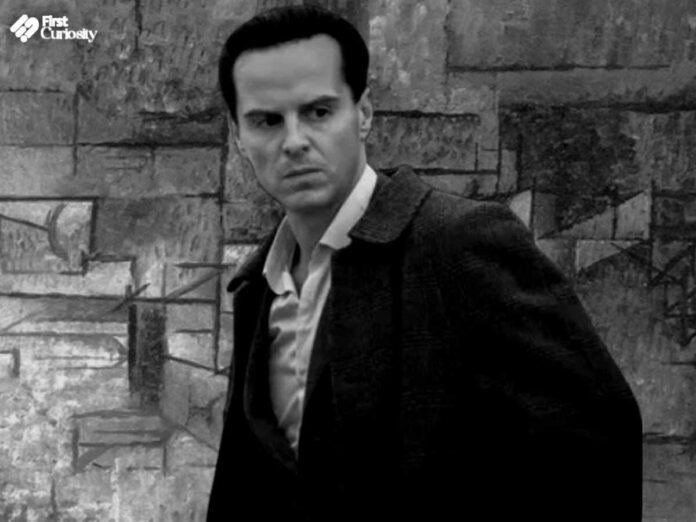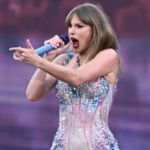Netflix’s recently released thriller ‘Ripley’ takes its viewers on an enticing journey laced with mystery, charm, and an exceptionally well-curated artistic backdrop. The show stands apart because of the way some artistic masterpieces weave themselves seamlessly into the fabric of the narrative. As Tom Ripley navigates his way through an intriguing journey, some iconic artworks take center space in his story, serving as mirrors to the moral quandaries and psychological depths of his character.
These art pieces are well-curated by the show’s creators to quite aptly illuminate the thematic undercurrents of the lead character’s life. Chief among these are the works of the Italian master Caravaggio, who also was a treacherous murderer — much like the show’s lead character played by Andrew Scott. Here are all the 8 iconic paintings featured in ‘Ripley’ and what they symbolize.
Related: Tom Ripley’s Mental Illness In Netflix’s ‘Ripley’ Explained: Is He A Psychopath?
‘Augustus John’ by Sir William Orpen
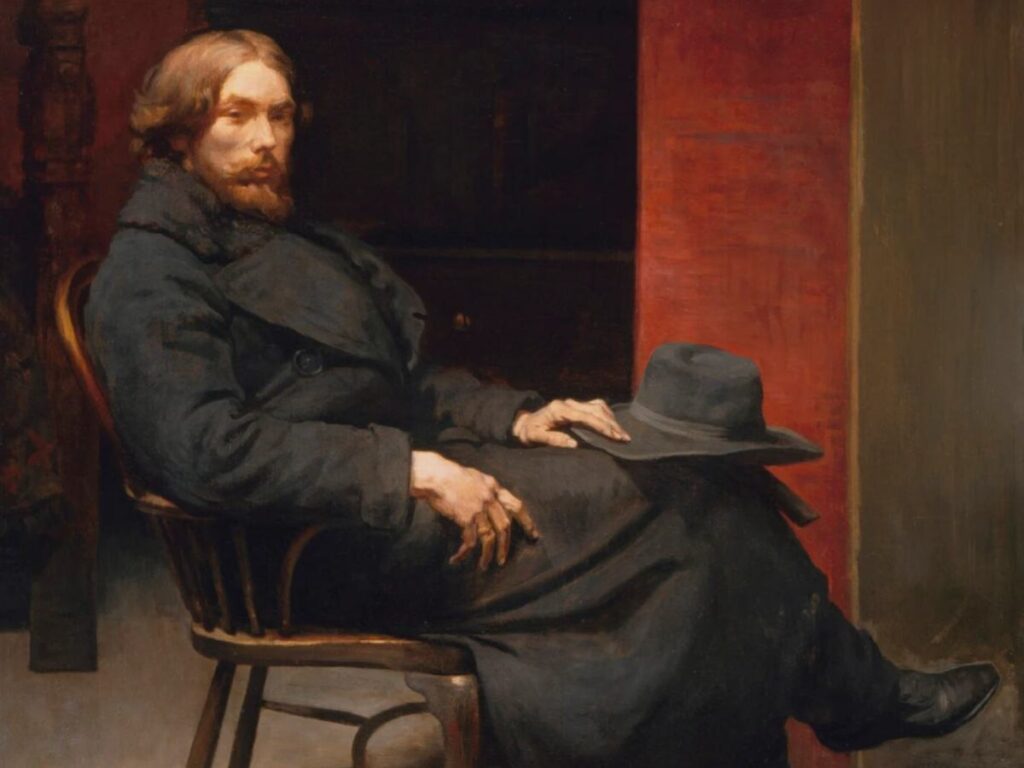
Painted in 1900 by Sir William Orpen, ‘Augustus John’ symbolizes the inception of Tom’s friendship with Richard, played by Johnny Flynn. Tom is seen especially fixated on this portrayal of friendship between two men. As the show progresses it becomes clear that it would aptly reflect the way Tom gets obsessed with Richard so he can imitate him in Rome. Tom spends a long time studying Richard’s habits and mannerisms, setting the stage for the well-planned deceit that follows.
‘Guitar Player’ by Pablo Picasso
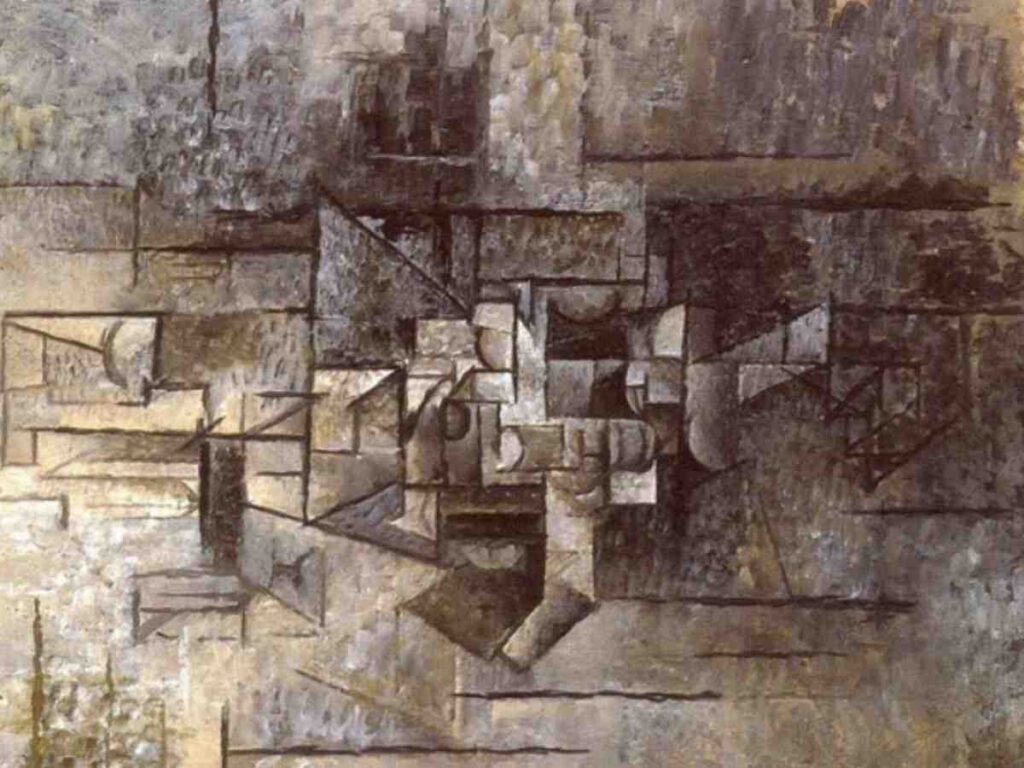
This 1910 painting by the exceptional Picasso beckons to Tom with the allure of opportunity. In the show, it is a tangible symbol of the financial windfall that Tom seeks to exploit. Initially shocked to find it just hanging there, Tom finds its presence on Richard’s wall as a reminder that in his world, everything is up for grabs. However, it is later revealed that he sends it to himself using his new pseudonym Timothy Finshaw as insurance, in case he has to abandon his identity as Richard Greenleaf.
‘The Seven Works of Mercy’ by Caravaggio
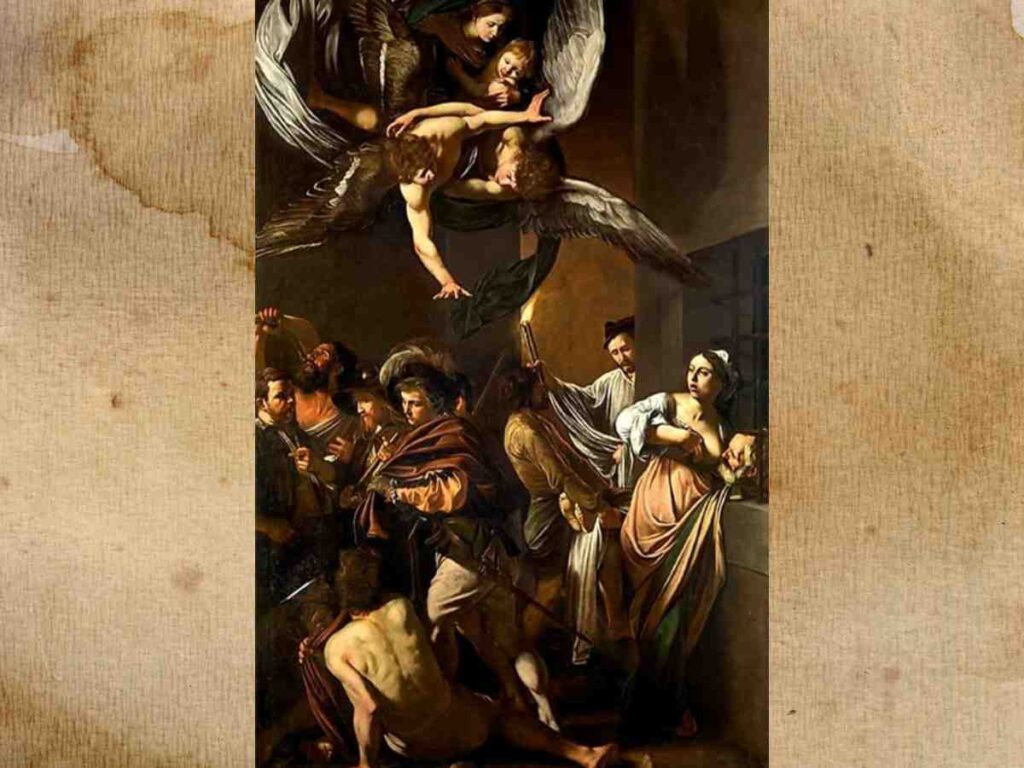
Painted by Caravaggio 1607, this painting captivates Tom with its chiaroscuro brilliance, echoing the duality of his own nature. As Tom grapples with the complexities of morality, Caravaggio’s evocative imagery shows him the mirror where he sees his own inner turmoil. The black and white presentation is ‘Ripley’ is also a deliberate artistic decision that serves to amplify Caravaggio’s masterful manipulation of light and shadow. By removing color from the equation, the attention is drawn to the interplay of darkness and light. The contrast accentuates the duality inherent in the narrative, mirroring the starkness between Tom’s outward charm and his inner moral decay.
‘The Calling of St. Matthew’ by Caravaggio
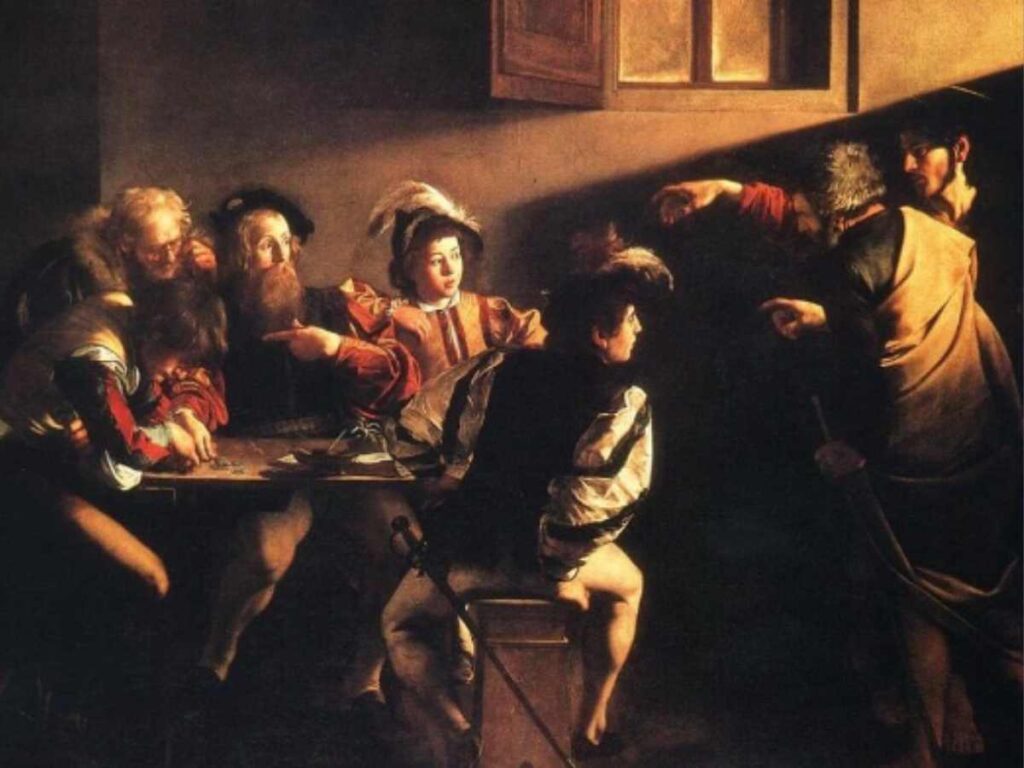
When Tom arrives in Rome, he is captivated by Caravaggio’s masterpiece, ‘The Calling of St. Matthew’. He pays little attention to ‘The Martyrdom of St. Matthew’ which portrays Matthew’s death. Tom instead fixates on the moment of his calling by Jesus, which reflects Tom’s own approach of ignoring the potential consequences of his actions. The ambiguity of the artwork, with critics debating the identities of the figures, mirrors Tom’s conflicted identity and the moral ambiguity he possesses.
In case you missed it: Amber Heard Accused Of Using Lines From ‘The Talented Mr. Ripley’ In Her Court Testimony
‘David with the Head of Goliath’ by Caravaggio
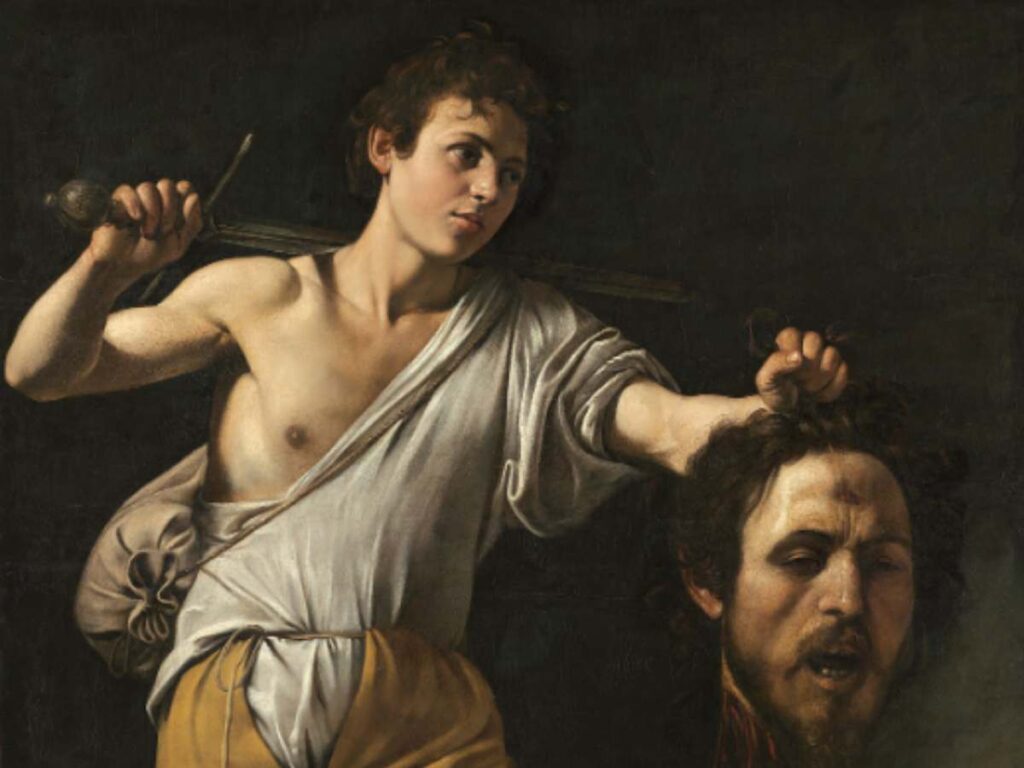
This artwork, also painted in 1610, offers Tom a glimpse into his own existential reckoning, as he grapples with the implications of his actions. Amidst the hallowed halls of the Contarelli Chapel, Tom confronts his own mortality, a pivotal moment in his journey of self-discovery. In ‘David with the Head of Goliath’, a biblical scene infused with a splash of blood offers a vivid and fresh interpretation. Despite David’s triumph, his expression combines sadness and disgust, because of the pity for the fallen giant. This mirrors Tom Ripley’s character who is not a natural-born killer, but has to witness brutal deaths.
‘Nativity with St. Francis and St. Lawrence’ by Caravaggio
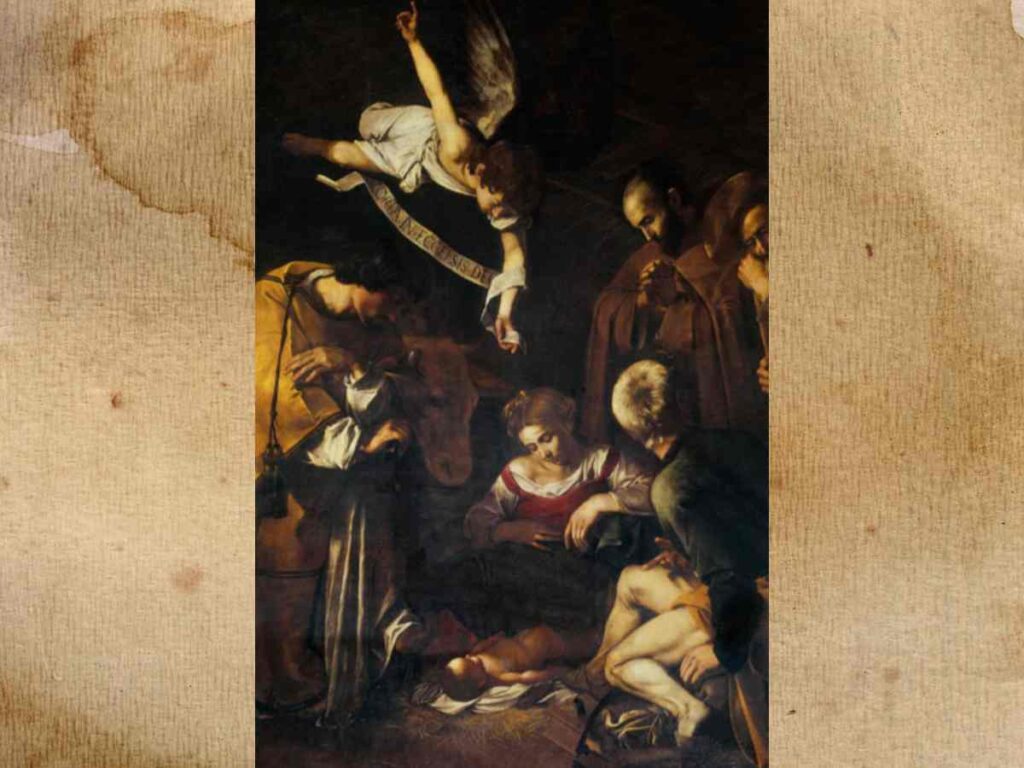
This painting hints at Tom’s precarious rebirth amidst the shadows of criminality and mystery. The painting reflects a modified rendition of Jesus’s birth and may symbolize Tom’s rebirth — but not as Richard Greenleaf. Instead, it reflects a reinvented version of himself. Interestingly, all artworks featured in ‘Ripley‘ are authentic except this one painted in 1609. This painting is merely a reproduction, as its real counterpart vanished in 1969, coincidentally postdating Ripley’s narrative. Believed to be a casualty of the Sicilian Mafia, its disappearance parallels Tom’s existence.
‘The Crucifixion of St. Peter’ by Caravaggio
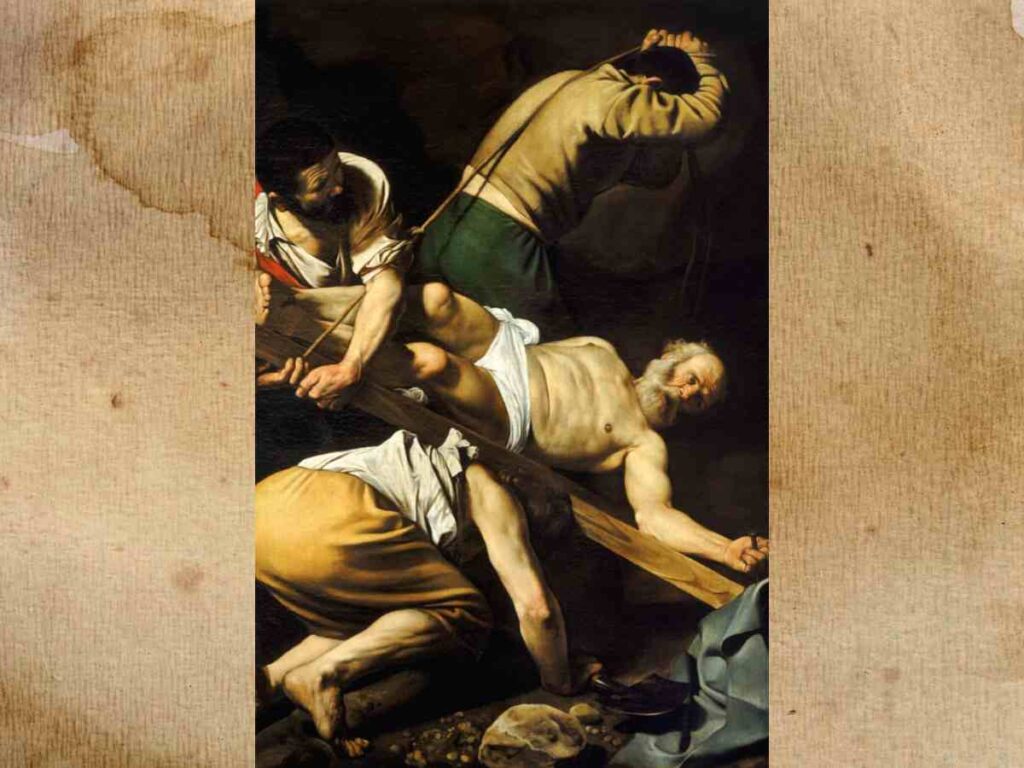
This painting sets the stage for the season’s climactic showdown. As the story progresses, Tom increasingly identifies with Caravaggio, the murderous artist. In Episode 8, the show goes back to the 17th century, portraying Caravaggio indulging in wine post-murder. This is also Tom’s own post-crime ritual. ‘Ripley’ thus brilliantly juxtaposes the two men, suggesting that Tom himself has become synonymous with the murderous artist — except, Tom’s artistry lies not in painting but in his adeptness at deception.
‘Madonna and Child with St. Anne’ by Caravaggio
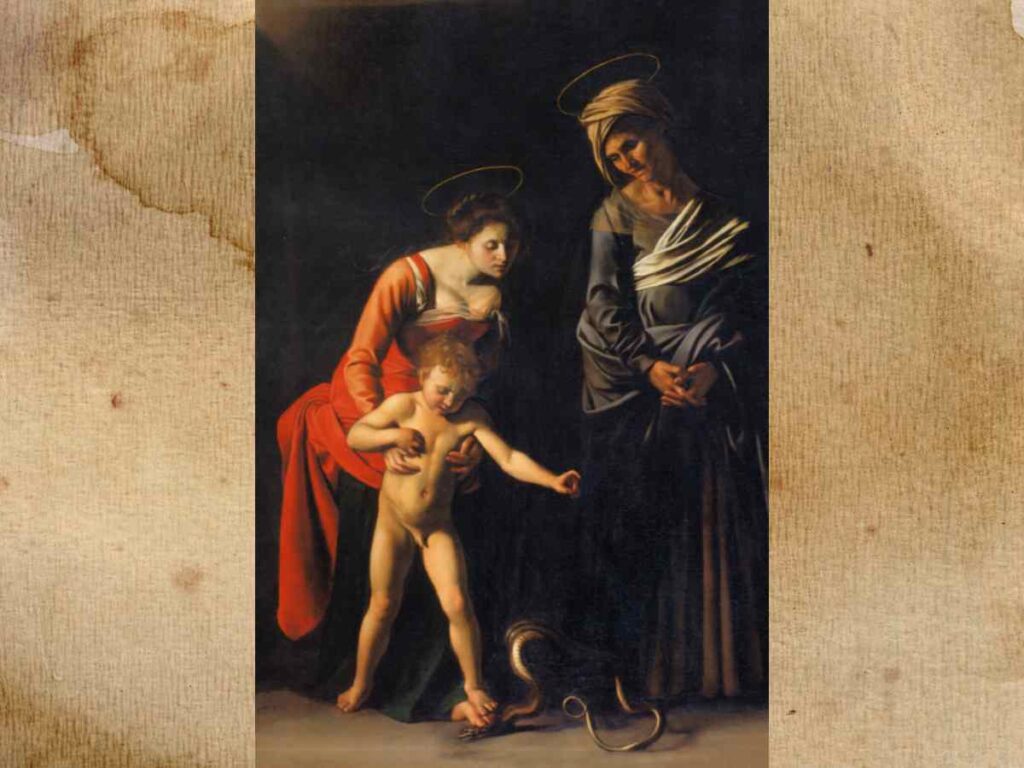
This painting offers the viewers a glimpse of redemption amidst the chaos, as Tom grapples with the consequences of his actions. The painting is a poignant symbol of the battle between good and evil, depicting the Virgin Mary guiding Jesus to triumph over a serpent. It parallels Tom’s cunning nature as he eludes accountability. Despite embodying the serpent in this biblical imagery, Tom emerges unscathed. He manages to get a new British passport and a Picasso while evading justice. Ripley’s narrative challenges the conventional trope of good triumphing over evil, as Tom manipulates situations to his advantage.
As the series concludes with Tom’s victory, it sets the stage for a second season, although its continuation remains uncertain. With its masterful use of intrigue and symbolism, the series offers a wonderfully blended glimpse into the complexities of human nature and how it reflects in art.
You might also like to read:

